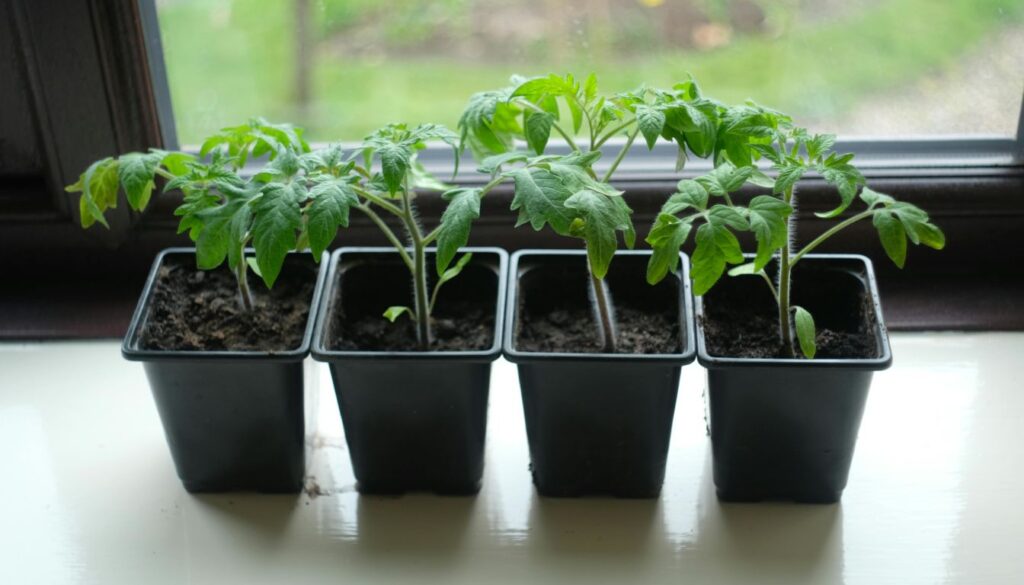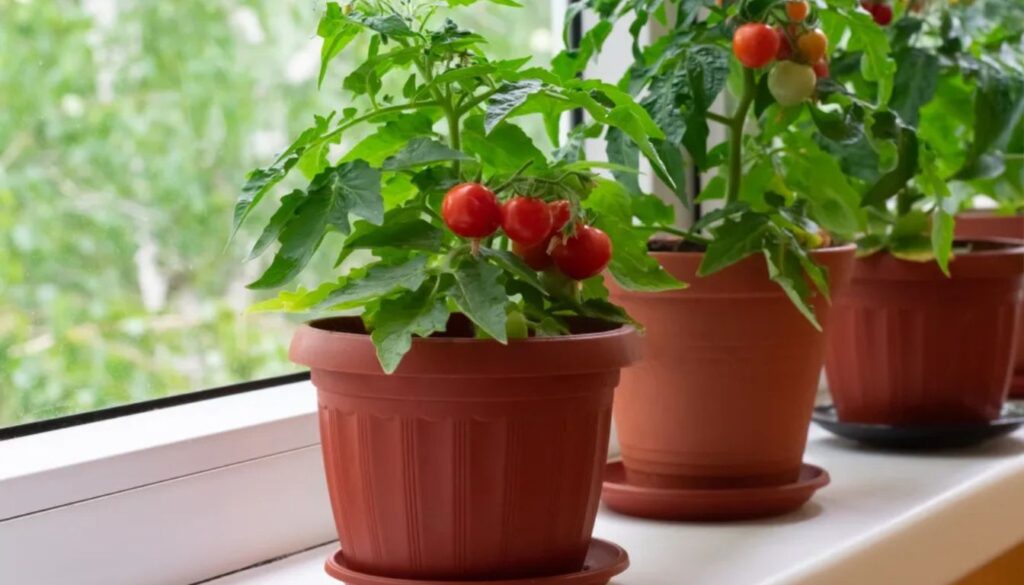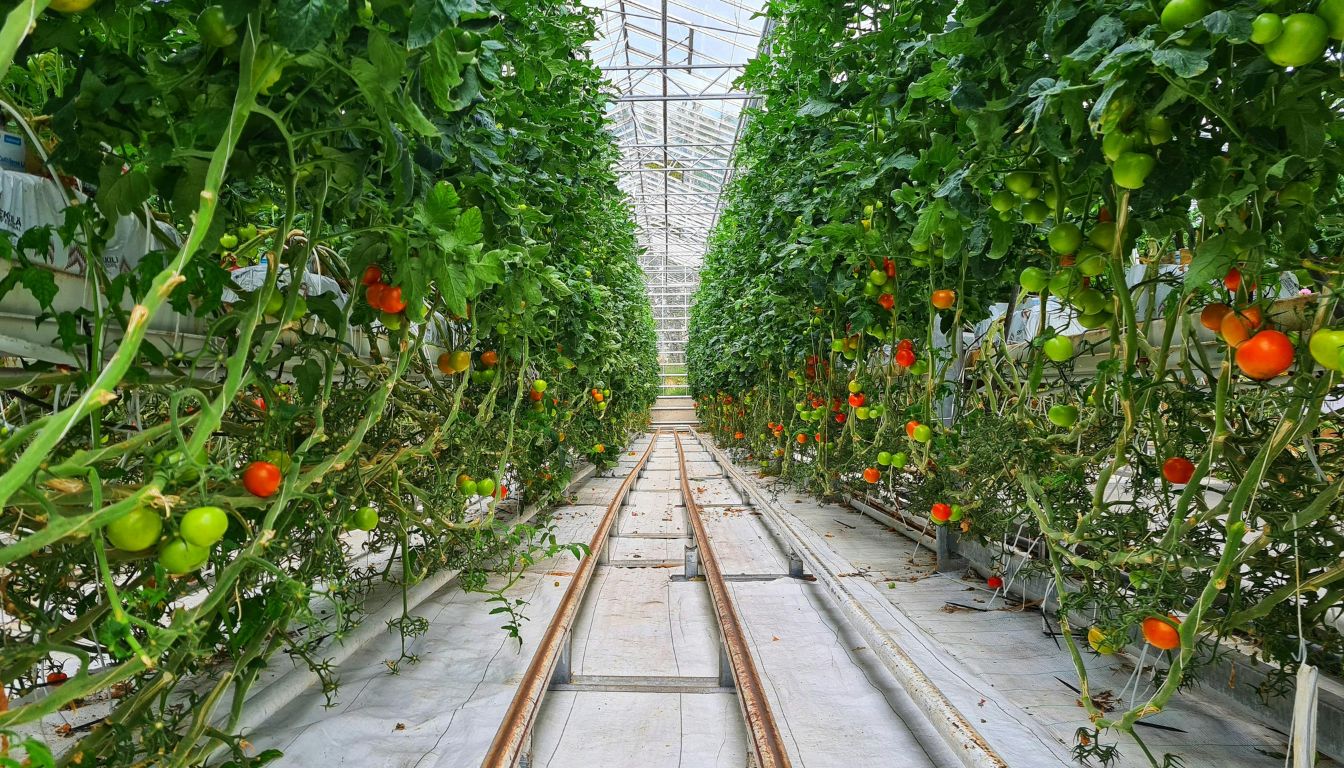Paul Johnston is the founder and master herbalist of The Herb Prof, with decades of clinical experience in naturopathic medicine, herbal remedies, detoxification and holistic wellness. After overcoming his own serious health challenges, he now dedicates himself to helping others reclaim their health naturally.
As a gardener, I have always been intrigued by the possibility of keeping tomato plants alive through the winter. Although tomatoes are usually grown as annuals and complete their life cycle within a single season, they can also be cultivated as perennials under the right conditions. Overwintering tomato plants is a useful way to preserve a particular line of genetics when seeds are scarce and can even allow for fruit production during the colder months.
There are several ways to overwinter tomato plants, but the most common methods involve bringing them indoors or keeping them in a greenhouse. Before bringing your tomato plants indoors, it’s important to do some preparation. This includes pruning the plants, removing any diseased or damaged leaves, and transplanting them into a container with fresh soil. It’s also important to provide the plants with adequate light, either by placing them near a south-facing window or by using grow lights.
If you’re planning to keep your tomato plants in a greenhouse, you’ll need to make sure the temperature stays above freezing. You may also need to provide supplemental lighting if the greenhouse doesn’t receive enough natural light. With the right care and attention, overwintering tomato plants can be a rewarding experience that allows you to enjoy fresh tomatoes year-round.
Can Tomato Plants Survive Winter?
As a gardener, you may be wondering if it is possible to keep your tomato plants alive during the winter months. The good news is that tomato plants can survive the winter if you take the right steps to protect them. In this section, I will discuss the possibility of overwintering tomato plants.
The Possibility of Overwintering Tomato Plants
Tomato plants are native to tropical regions and, as such, they can be grown as perennials in warm climates. However, in colder climates, tomato plants are typically grown as annuals and are replanted each spring. But, with proper care, tomato plants can be overwintered and brought back to life in the spring.
There are several methods for overwintering tomato plants, including bringing them indoors, covering them with protective materials, or digging them up and storing them in a cool, dry place. Each method has its own advantages and disadvantages, so it’s important to choose the one that works best for your specific situation.
One of the easiest methods for overwintering tomato plants is to bring them indoors. This method involves digging up the plants and potting them in containers. Once potted, the plants can be moved indoors to a warm, sunny location. This method is ideal for gardeners who have limited outdoor space or who live in areas with harsh winter weather.
Another method for overwintering tomato plants is to cover them with protective materials. This method involves wrapping the plants in blankets, burlap, or other materials to protect them from the cold. This method is ideal for gardeners who have a large outdoor garden and want to keep their plants in the ground.
Tomato plants can survive the winter if they are given the right care and protection. Whether you choose to bring your plants indoors or cover them with protective materials, it’s important to choose a method that works best for your specific situation. With a little bit of effort, you can enjoy fresh tomatoes year-round.
Preparing Tomato Plants for Winter
As the summer season comes to an end, it’s time to start thinking about how to keep your tomato plants alive over the winter. Overwintering tomato plants is a great way to continue a certain line of genetics when seeds are in short supply or to produce fruit during winter. In this section, I will discuss how to prepare tomato plants for winter.
Choosing a Healthy Plant for Overwintering
The first step in preparing tomato plants for winter is to choose a healthy plant for overwintering. It’s important to choose a determinate variety of tomato plants, as they are easier to manage and have a shorter lifespan. Look for a plant that is healthy, disease-free, and has a strong root system. Avoid plants that are weak, diseased, or have been stressed during the summer season.
Benefits of Overwintering Determinate Plants
Overwintering determinate tomato plants has several benefits. Firstly, it saves time and money as you don’t have to start from scratch in the spring. Secondly, it allows you to continue a certain line of genetics when seeds are in short supply. Lastly, it allows you to produce fruit during the winter season and enjoy fresh tomatoes all year round.
Managing Expectations for Fruit Production
It’s important to manage your expectations for fruit production when overwintering tomato plants. While it is possible to produce fruit during the winter season, it’s important to remember that plants will not produce as much fruit as they would during the summer season. Additionally, frost can damage the plants and reduce fruit production. Therefore, it’s important to take steps to protect the plants from frost and ensure they receive adequate lighting and heating.
In summary, preparing tomato plants for winter involves choosing a healthy plant for overwintering, understanding the benefits of overwintering determinate plants, and managing expectations for fruit production. By following these steps, you can successfully keep your tomato plants alive over the winter season and continue to enjoy fresh tomatoes all year round.
Methods of Overwintering Tomato Plants

As a gardener, I know that tomato plants are usually grown as annuals, which means they complete their lifecycle in one growing season. However, with the right techniques, it is possible to keep tomato plants alive through the winter and have them produce fruit the following year. In this section, I will discuss four methods of overwintering tomato plants.
Overwintering Indoors
Overwintering tomato plants indoors is a popular method of keeping them alive through the winter. To do this, you will need to transplant your tomato plants into pots and bring them inside before the first frost. The ideal temperature for overwintering tomato plants indoors is between 50 and 60 degrees Fahrenheit. You should also ensure that your plants receive enough light, so placing them near a south-facing window is recommended.
Using a Winter Greenhouse
Another method of overwintering tomato plants is to use a winter greenhouse. A winter greenhouse is an unheated greenhouse that is used to protect plants from the cold. To overwinter tomato plants in a winter greenhouse, you will need to pot them up and move them into the greenhouse before the first frost. The temperature in the greenhouse should be kept between 40 and 50 degrees Fahrenheit.
Propagating Tomato Plants from Cuttings
Propagating tomato plants from cuttings is another way to overwinter tomato plants. To do this, you will need to take cuttings from your tomato plants before the first frost and root them in water. Once the cuttings have rooted, you can transplant them into pots and keep them indoors or in a winter greenhouse.
Keeping Plants in Bare-Root Dormancy
Keeping tomato plants in bare-root dormancy is a method of overwintering that involves storing the plants in a dormant state. To do this, you will need to dig up your tomato plants before the first frost and remove the soil from their roots. You can then store the plants in a cool, dark place, such as a basement or garage, until the following spring. Before planting the plants in the spring, you will need to soak their roots in water for a few hours to rehydrate them.
There are several methods of overwintering tomato plants, including overwintering indoors, using a winter greenhouse, propagating tomato plants from cuttings, and keeping plants in bare-root dormancy. Each method has its advantages and disadvantages, so it is important to choose the method that works best for you and your gardening needs.
Grow Tent Tomatoes: Your Winter Gardening Solution
If you’re determined to keep your tomato plants thriving through the winter, growing tent tomatoes might just be your best bet. With the right conditions—adequate lighting, temperature control, and humidity—you’ll be amazed at how well your grow-tent tomatoes can thrive. So, if you want to enjoy fresh tomatoes all winter long, investing in a grow tent for your tomatoes is not just a clever idea; it’s a delicious solution that will have you savoring the fruits of your labor even in the dead of winter.
Tips for Successful Overwintering
As a seasoned gardener, I have learned that overwintering tomato plants can be a challenge, but with the right care and precautions, it is possible to keep them alive and thriving through the winter months. Here are some tips that I have found to be helpful:
Monitoring Temperature and Light Exposure
One of the most important factors in overwintering tomato plants is monitoring their temperature and light exposure. Tomatoes need a minimum temperature of around 50°F to survive, so it is important to keep them in a location that stays above this temperature. In addition, they need at least 6-8 hours of sunlight per day, so be sure to place them in a south-facing window or under grow lights.
Taking Proper Care and Precautions During the Winter
During the winter months, it is important to take proper care and precautions to keep your tomato plants healthy. This includes regular pruning to remove any dead or diseased leaves, as well as providing adequate humidity to prevent the leaves from drying out. It is also important to avoid overwatering, as this can lead to root rot.
Preparing for Spring Planting and Transplanting New Growth
As the winter months come to an end, it is important to begin preparing for spring planting and transplanting new growth. This includes fertilizing your tomato plants with a balanced fertilizer to provide them with the nutrients they need to thrive. In addition, be sure to transplant them into larger pots as they grow, and gradually increase their exposure to sunlight to prevent shock.
Overall, overwintering tomato plants requires careful attention to temperature, light exposure, and proper care and precautions during the winter months. By following these tips, you can successfully keep your tomato plants alive and thriving through the winter, and prepare them for a successful spring planting season.
Before You Go – Keeping Tomato Plants Over Winter

Keeping tomato plants over winter can be a great way to ensure a fresh supply of homegrown tomatoes year-round. Overwintering tomatoes can be done in a variety of ways, including indoors and outdoors, depending on your climate and resources.
By overwintering tomatoes, you can ripen any remaining green tomatoes and potentially increase your yield for the next season. However, it is important to note that overwintering may not produce the same yield as a fresh crop, so it is important to manage your expectations accordingly.
When overwintering tomatoes, it is important to choose the right potting soil and provide adequate care for the plants. This includes proper watering, pruning, and fertilization. Additionally, choosing the right tomato varieties can play a critical role in successfully overwintering them.
Overall, with the right knowledge and resources, overwintering tomato plants can be a rewarding and enjoyable experience for any home gardener.
Don’t forget to add theherbprof.com to your favourites so you don’t miss out on future articles!
References – Keeping Tomato Plants Over Winter
Little Herb Encyclopedia, by Jack Ritchason; N.D., Woodland Publishing Incorporated, 1995
The Ultimate Healing System, Course Manual, Copyright 1985, Don Lepore
Planetary Herbology, Michael Tierra, C.A., N.D., Lotus Press, 1988
Handbook of Medicinal Herbs, by James A. Duke, Pub. CRP Second Edition 2007
The Complete Medicinal Herbal, by Penelope Ody, Published by Dorling Kindersley
Check the Following Articles!
Can You Use Regular Fertilizer for Semi Hydroponics?
Indoor Trees Low Light: Discover the Top 10 Options!
White Spots on My Cucumber Leaves: Causes & Solutions
Frequently Asked Questions – Keeping Tomato Plants Over Winter
How can I successfully overwinter tomato plants indoors?
To overwinter tomato plants indoors, you need to ensure that they receive enough light, water, and nutrients. You can either keep them in their pots or transplant them into larger containers. Place the plants near a south-facing window or under grow lights for at least 6 hours of light per day. Keep the soil moist but not waterlogged, and fertilize them every 2-3 weeks with a balanced fertilizer.
What are the best practices for keeping tomato plants in pots during winter?
When keeping tomato plants in pots during winter, it is important to choose the right container and soil. Use a container that is at least 12 inches deep with drainage holes and fill it with well-draining soil. Water the plant when the top inch of soil is dry, and fertilize every 2-3 weeks with a balanced fertilizer. Place the pot near a south-facing window or under grow lights for at least 6 hours of light per day.
Is it possible for cherry tomato plants to be perennial and survive multiple seasons?
Cherry tomato plants are typically grown as annuals and do not survive multiple seasons. However, with proper care, it is possible to keep them alive over the winter and regrow them in the spring. Follow the same overwintering techniques as you would for regular tomato plants.
What steps should I take to ensure my tomato plants regrow after winter?
To ensure your tomato plants regrow after winter, you need to prune them back in the fall to encourage new growth in the spring. Remove any dead or diseased foliage, and cut back the remaining stems by one-third. When the weather warms up in the spring, gradually increase the amount of light and water the plants receive.
How do you protect outdoor tomato plants from winter conditions?
To protect outdoor tomato plants from winter conditions, cover them with frost blankets or row covers when temperatures dip below freezing. You can also add a layer of mulch around the base of the plant to insulate the roots. Prune back any dead or diseased foliage, and cut back the remaining stems by one-third.
What is the proper method for overwintering tomato cuttings?
To overwinter tomato cuttings, take cuttings from healthy plants in the fall and root them in water or soil. Once they have rooted, transplant them into small pots and keep them indoors under grow lights or near a south-facing window. Keep the soil moist but not waterlogged, and fertilize every 2-3 weeks with a balanced fertilizer.

